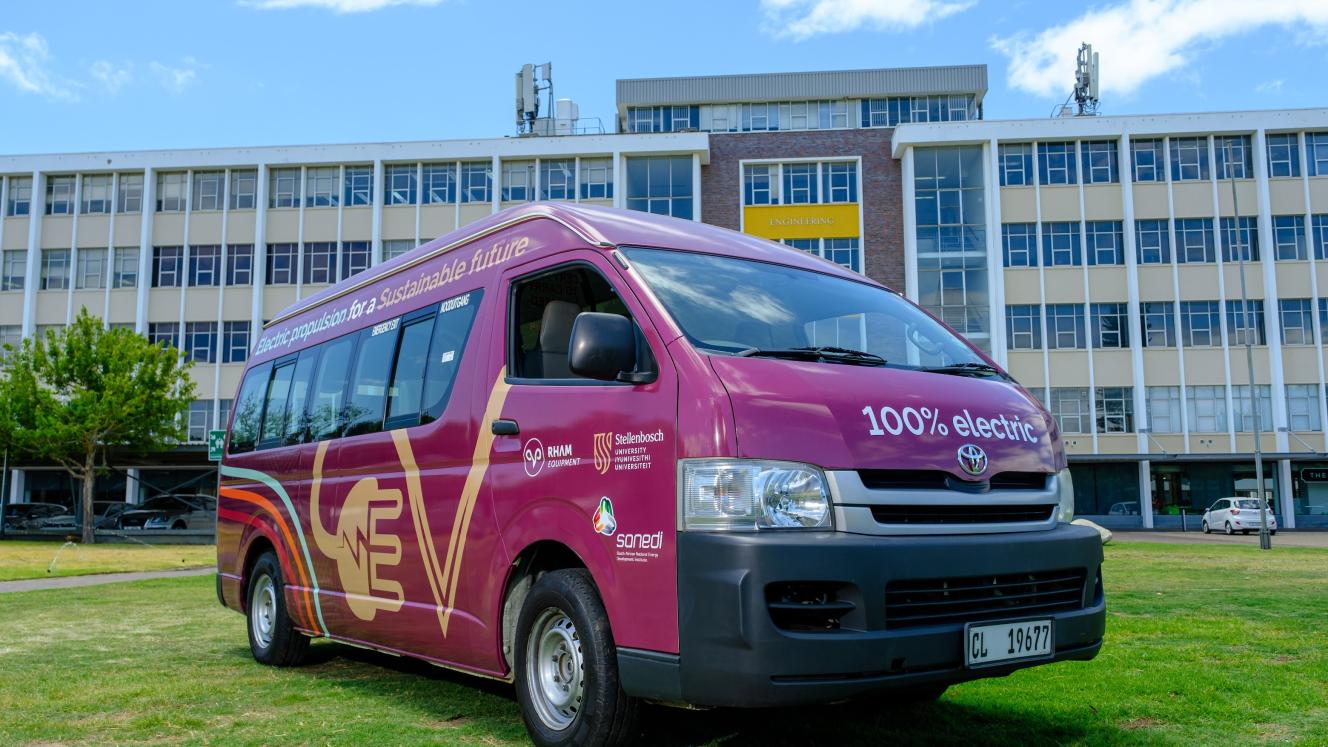Stellenbosch University officially launched its Electric Mobility Lab on October 18 – a facility dedicated to converting internal combustion engine (ICE) vehicles to electric specifically tailored for transport sectors in Africa.
“This lab is the culmination of five years of research,” said Thinus Booysen, Head of the Electric Mobility Lab and Professor of Engineering at Stellenbosch University. “We’ve now reached a stage where we have a physical space dedicated to advancing our work.”
The Electric Mobility Lab is primarily funded by the Western Cape government. It is staffed by eight postgraduate engineering students who focus on running simulations and developing powertrains and electrical systems for electric vehicles. “This research has been our focus for the past five years and, with the addition of a fully equipped workshop, we now have the capability to physically convert ICE into electric vehicles, significantly advancing our practical research,” Booysen added.
“We aim to differentiate our research from global projects by focusing on Africa’s unique transportation needs.”
About addressing challenges in South Africa’s transport sector, he said: “We want to contribute to solving the country’s transport issues in a sustainable way.” A key focus of the lab’s research is understanding the mobility patterns of vehicles such as minibus taxis and motorbikes, which informs the team’s planning for the transition to electric mobility. This includes infrastructure development to support electric vehicles. “We are studying how to generate the necessary electricity when it’s needed, and in the required quantities, using clean energy sources,” Booysen said.
“We already have a range of measurement tools and equipment similar to what you’d find in a standard mechanic workshop. We’re also in the process of installing dynamos and lifts as part of an ongoing effort to fully equip the lab.”
To power its research, the lab relies primarily on solar and wind energy, reducing dependence on South Africa’s often limited and unstable grid electricity. “We supplement grid power with solar and wind to optimise the energy mix, ensuring grid stability and maintaining clean energy availability,” Booysen explained. Solar energy is particularly well-suited to Africa due to its abundance and alignment with the operating schedules of taxis and buses, which are typically idle during peak sunlight hours, making solar charging highly efficient.
The lab has already used its research to convert several vehicles including a minibus taxi last year, a 65-seater bus earlier this year and a motorbike in March. The reassembly, welding and bolting were carried out at a factory in Johannesburg.
During today’s launch, the lab will hand over the converted bus to its client. “It’s roadworthy and ready to begin operations,” Booysen said.
The launch coincides with the completion of a collaborative project with Roam, an African electric mobility company. The lab has been testing the performance of Roam’s electric motorbike using renewable energy. The motorbike, which began its journey from Nairobi, Kenya, on September 29, powered solely by solar energy, is expected to arrive in Stellenbosch today – just in time for the opening ceremony.
“We’ve been working with Roam to study and improve the bike’s performance,” Booysen said. “Rather than using grid electricity, we opted to power it through a mobile solar power plant to keep the project entirely clean. The bike runs on electricity regardless of the source but we wanted this to be a fully renewable initiative.”













